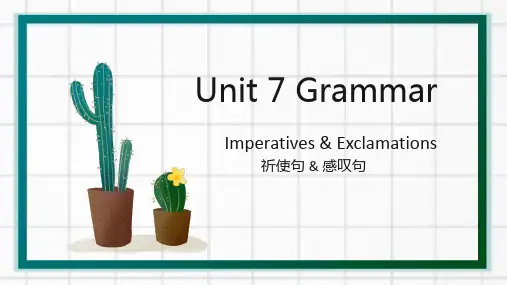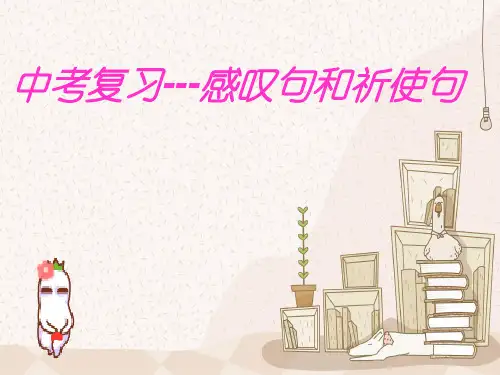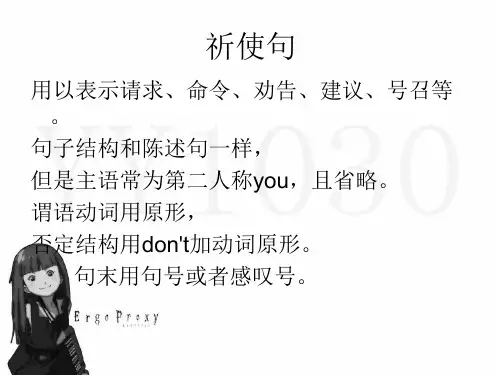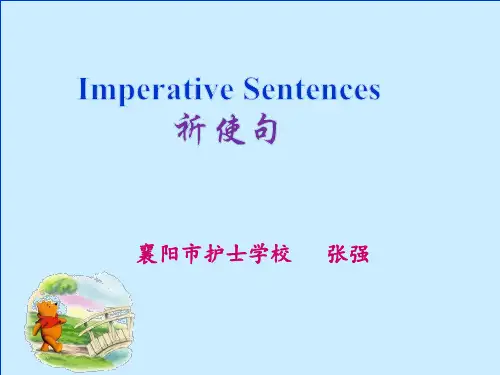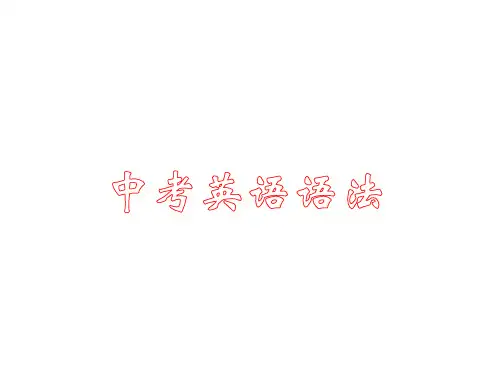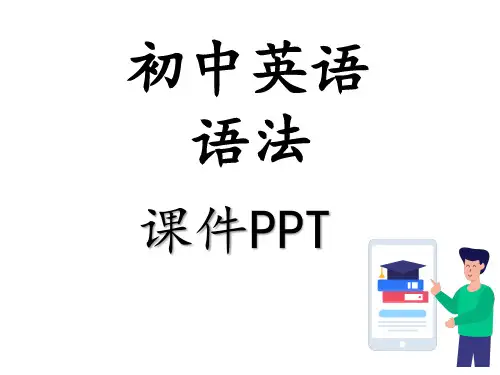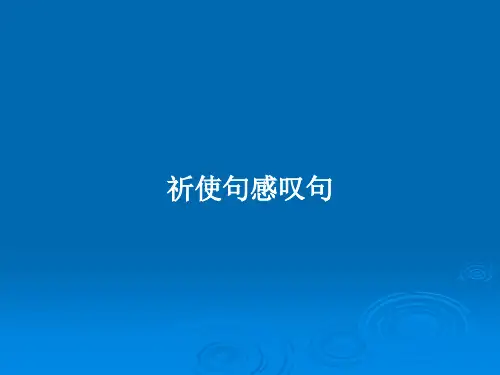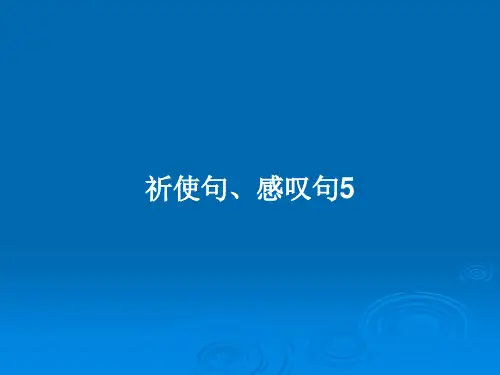8,陈述部分有have to +v.原 (had to + v.原),
疑问部分常用don„t +主语(didn‟t +主语)。
We have to get there at eight, don't we? 9,陈述部分若为主从复合句,疑问部分的主 语通常与主句的主语一致。 She said he would come tomorrow, didn‟t she? He told us how to get to the farm, didn‟t he?
反意疑问句特殊情况 1,当陈述部分含有 little/few/never/hardly/seldom/no/neith er/nobody/nothing,none等表示否定意义的 词时,疑问部分要用肯定形式。 She has few friends, does she? She has never been there,has she? There was nothing in the box, was there? None of us knows it, do we?
3,陈述部分为I think/ believe/ suppose 引导的宾语从句,疑问部分根据从句的情 况及整句所表达的肯定或否定意义来完成。 • I think he is at home isn‟t he? • I don‟t believe Tom can succeed, can he ?
4,当陈述部分是there be句型时, • There are some apples. aren‟t there? • There will be robots in people‟s home in the future, won‟t there? 5,省略的感叹句的反意疑问句一律使用否定 形式,并用be 的一般现在时。 • What a clever boy, isn‟t he? What beautiful girls, aren‟t they?
